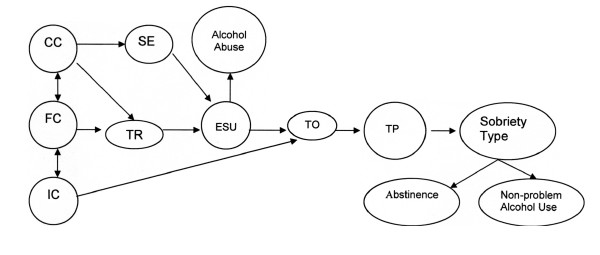Figure 1.
Heuristic Model of Alaska Native Protective Pathways Key. CC (community characteristics) Yuut cayarait includes the way the community organizes family, school, and community activity, and enforces alcohol policy and the drinking status of the community, CC includes role models, opportunities, limits, and safe places. FE (family environment) Ilakelriit cayarait includes family functioning in such areas as cohesion, conflict, recreation outlets, moral-spiritual focus, and home organization. Factors included parent-child relationship, affection and praise, transmission of expectations, safety and protection from harm and models of sobriety. IC (individual characteristics) Yuum Ayuqucia are belief in self (communal and self-mastery), wanting to contribute to others and Ellanqaq (Yup'ik mindfulness and awareness. SE (social environment) Yuuyaraq includes role models and social support from extended family, peers, and other adults outside of immediate, nuclear family. TR (trauma) Akngirneq includes sexual abuse, domestic violence, and death of loved ones. It includes being a victim and observing others being a victim. An individual's perception of trauma is critical, as is the meaning they attach to their experience and how they respond to it. ESU (experimental substance use) Meqerraaryaurtellemni are early experiences with substances, including alcohol, prior to the establishment of use patterns or abstinence. TO (thinking it over) Umyuangcallemni involves reflecting on one's experience and developing a personal life narrative. TP (turning point) Ayuqucinellemni comes out of this reflective process and leads to a decision about how the person will use alcohol.

